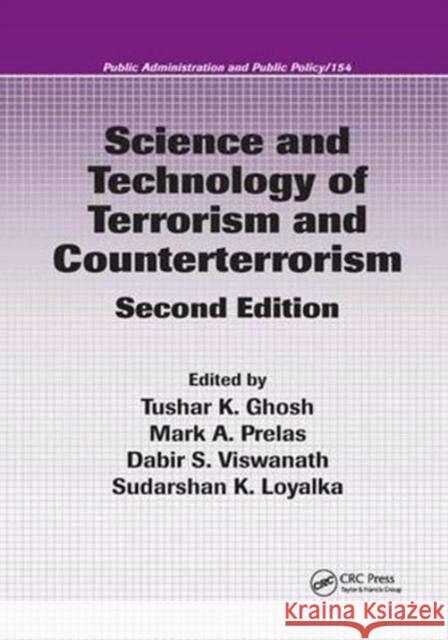Science and Technology of Terrorism and Counterterrorism » książka
Science and Technology of Terrorism and Counterterrorism
ISBN-13: 9781138381407 / Angielski / Miękka / 2018 / 604 str.
Science and Technology of Terrorism and Counterterrorism
ISBN-13: 9781138381407 / Angielski / Miękka / 2018 / 604 str.
(netto: 287,97 VAT: 5%)
Najniższa cena z 30 dni: 287,08
ok. 22 dni roboczych
Dostawa w 2026 r.
Darmowa dostawa!
Traditionally, resources on terrorism and counterterrorism tend to focus on the social, behavioral, and legal aspects of the subject, with minimal emphasis on the scientific and technological aspects. Taking into account these practical considerations, the second edition of Science and Technology of Terrorism and Counterterrorism discusses the nature of terrorism and the materials used by terrorists. It describes how intelligence professionals and law enforcement personnel can detect and destroy these materials, and how they can deal with terrorist groups.This volume begins by introducing the shift in analysis of terrorist attacks after September 11, 2001 and summarizes selected case studies. It discusses the origin and nature of terrorism and the factors involved in diplomacy. Covering a broad range of topics, the book examines:Aerosol dispersion of toxic materialsBioterrorism and the manufacture, detection, and delivery of biological agentsAgricultural terrorismNuclear terrorism and nuclear weapons systems, threats, and safeguardsChemical terrorism, including manufacture, detection, delivery, and decontaminationCyber-terrorismPersonal protective equipmentThe role of government at federal, state, and local levelsThe role of international agencies and their resources, capabilities, and responsibilitiesThe National Infrastructure Protection PlanAs terrorist activities increase globally, it is critical that those charged with protecting the public understand the myriad of ways in which terrorists operate. While we cannot predict where, when, and how terrorists will strike, our vigilance in staying abreast of the terrorist threat is the only way to have a fighting chance against those who seek to destroy our world.











